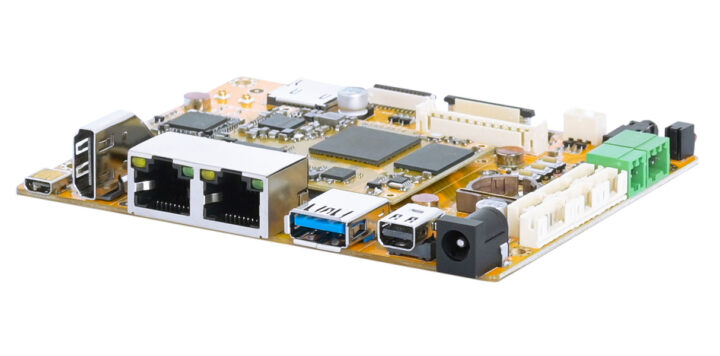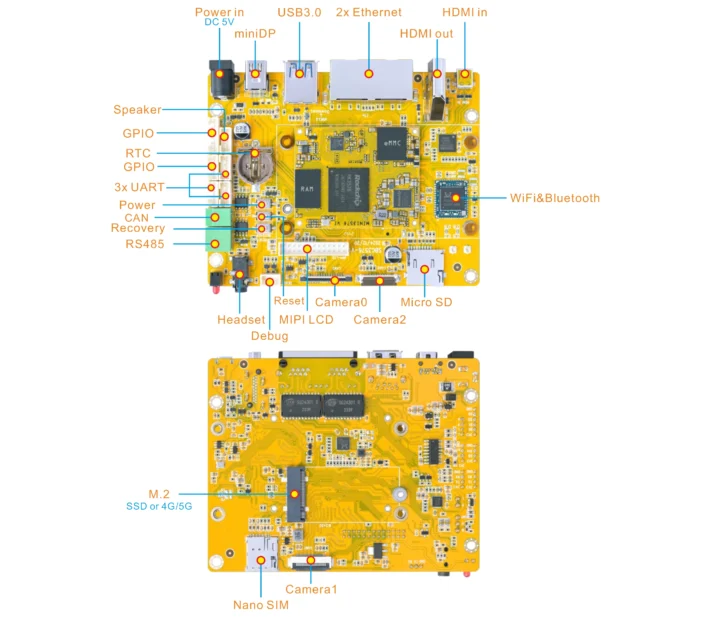Boardcon SBC3576 is a feature-rich single board computer (SBC) based on the MINI3576 system-on-module powered by a Rockchip RK3576 AI SoC and equipped with two 100-pin and one 44-pin board-to-board connectors for interfacing with the carrier board.
The carrier board is equipped with up to 8GB RAM, 128GB eMMC flash, two gigabit Ethernet ports, a WiFi 6 and Bluetooth 5.3 module, 4K-capable HDMI 2.1 and mini DP video outputs, a mini HDMI input port, a USB 3.0 Type-A port, RS485 and CAN Bus terminal block, and more. The Rockchip RK3576 SoC comes with the same 6 TOPS NPU found in the Rockchip RK3588/RK3588S SoC and can be used as a lower-cost alternative with less performance.
Boardcon SBC3576 specifications:
- SoC – Rockchip RK3576
- CPU
- 4x Cortex-A72 cores at 2.2GHz, four Cortex-A53 cores at 1.8GHz
- Arm Cortex-M0 MCU at 400MHz
- GPU – ARM Mali-G52 MC3 GPU clocked at 1GHz with support for OpenGL ES 1.1, 2.0, and 3.2, OpenCL up to 2.0, and Vulkan 1.1 embedded 2D acceleration
- NPU – 6 TOPS (INT8) AI accelerator with support for INT4/INT8/INT16/BF16/TF32 mixed operations.
- VPU
- Video Decoder: H.264, H.265, VP9, AV1, and AVS2 up to 8K at 30fps or 4K at 120fps.
- Video Encoder: H.264 and H.265 up to 4K at 60fps, (M)JPEG encoder/decoder up to 4K at 60fps.
- CPU
- System Memory – 4GB 32-bit SDRAM (up to 8GB)
- Storage
- 32GB eMMC flash (up to 128GB)
- NVMe SSD via M.2 2242 socket (multiplexed with 4G LTE/5G module)
- MicroSD card slot
- Video Output
- HDMI 2.1 port up to 4Kp120
- Mini DisplayPort 1.4 up to 4Kp120
- 4-lane MIPI DSI connector up to 2Kp60
- Video Input
- HDMI input via MIPI to HDMI input bridge
- 1x 4-lane MIPI CSI or 2x 2-lane MIPI CSI
- Audio
- 3.5mm audio jack (stereo output and microphone)
- 4-pin speaker connector
- Networking
- 2x Gigabit Ethernet RJ45 ports via Realtek RTL8211F-CG controller (one on the module and the other on the carrier board)
- WiFi 6 and Bluetooth 5.2 via RTL8852BE module
- Optional 4G LTE or 5G via M.2 module (multiplexed with SSD) and Nano SIM card slot
- USB – 1x USB 3.0 port
- Serial
- 3x 4-pin UART connector
- RS485 terminal block
- CAN Bus terminal block
- 3-pin Debug connector
- Expansion – GPIO connector
- Misc
- Reset, Recovery, and Power buttons
- RTC with battery connector
- Power
- Supply voltage – 5V/3A via power barrel jack
- Power Consumption – Typ.: 1.2W (12V/100mA); max: 6W (12V/500mA); min: 0.096W (12V/8mA)
- Dimensions – Baseboard: 110 x 85mm; MINI3576 SoM: 50 x 40mm
- Weight – TBD
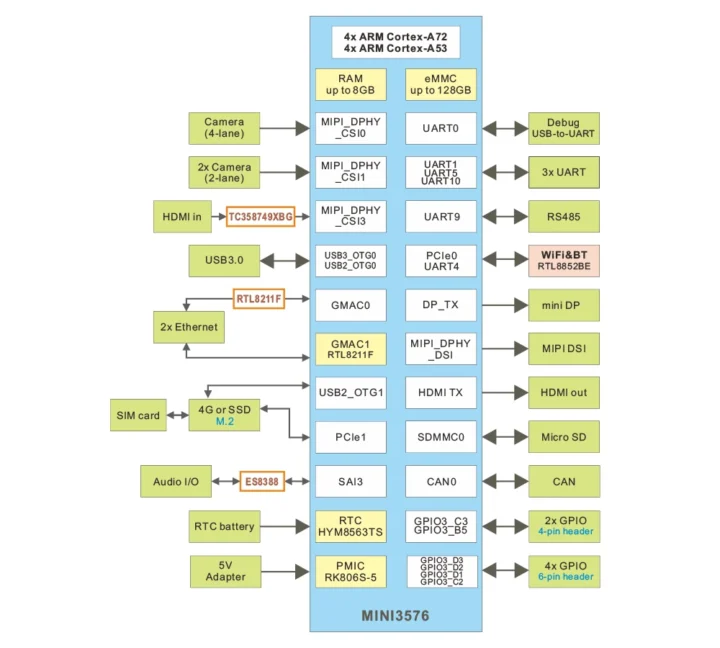
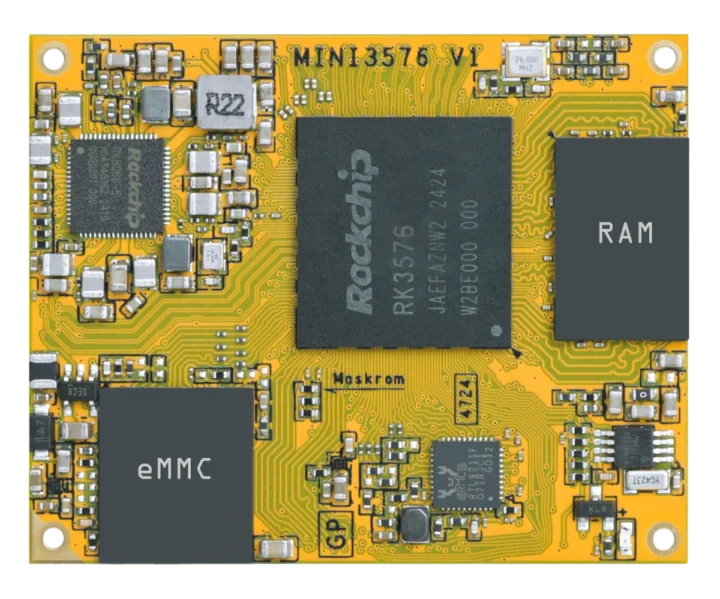
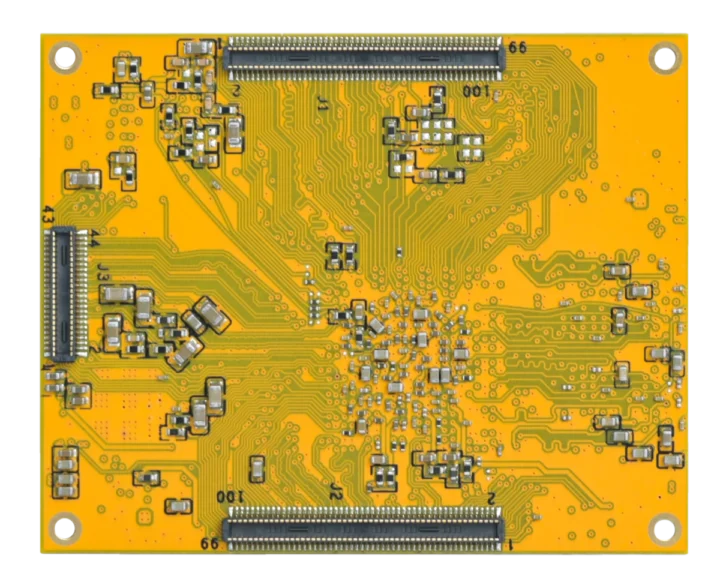
Boardcon provides Debian 12 and Buildroot BSPs with Linux 6.1.99, a rather old U-boot 2017.09 (Is that correct?), and drivers for the module and SBC. Optional accessories include Quectel EM05 4G LTE M.2 module, an 8MP SONY IMX415-AAQR-C camera module, a 13MP OV13850 module, and a 10.1-inch MIPI LCD with 1280×800 resolution and a 10-point capacitive touchscreen.
Note that while the RK3576 comes with the same 6 TOPS NPU as in the RK3588, the latter comes with 64-bit RAM, and the former with 32-bit RAM, so memory bandwidth-limited AI workloads (e.g. LLMs) will see lower performance on the RK3576. Boardcon’s SBC3576 SBC joins other Rockchip RK3576 boards including the MYiR Tech MYD-LR3576 development board, Firefly AIO-3576JD4, Banana Pi BPI-M5 Pro, and even Boardcon’s own EM3576 SBC with 12 analog camera inputs.
Boardcon did not provide pricing for the new SBC3576 or the MINI3576 system-on-module. Additional information may be found on the product page and in the short press release.

Jean-Luc started CNX Software in 2010 as a part-time endeavor, before quitting his job as a software engineering manager, and starting to write daily news, and reviews full time later in 2011.
Support CNX Software! Donate via cryptocurrencies, become a Patron on Patreon, or purchase goods on Amazon or Aliexpress


